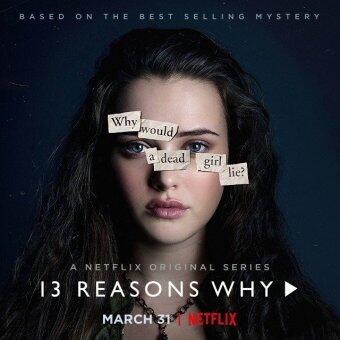It’s the latest binge-worthy series from Netflix that many are obsessing over, but 13 Reasons Why has prompted a growing number of calls to counselling services from those alarmed by the show’s content.
The series, which debuted in Australia late last month, is currently available for streaming on Netflix and depicts the suicide of the main character, a teenage girl played by Perth actress Katherine Langford.
The show presents particularly confronting and graphic imagery of the character’s suicide method and means.
Headspace, Australia’s youth mental health foundation, has received numerous calls from young people, parents and schools who have found the show distressing.
Headspace’s national manager for school support said the service had heard a range of concerns directly relating to the show over the last few weeks.
“People have said the show has triggered their own vulnerabilities and made them consider whether suicide is a possible option for them,” Kirsten Douglas said.
“We are so concerned about that and we see spikes in suicide when there is unsafe portrayals.”
Teenagers are particularly vulnerable to suicide contagion, Ms Douglas said, and content that shows suicide method is the most dangerous and unsafe content.
“That’s a huge driving factor around contagion … people may look at that the method as a real option.
“If you have seen it, it seems more attainable.
“When you watch harmful suicide footage it can lead to further death.”
Ms Douglas said the show also gave an unrealistic perspective on the repercussions of suicide and emphasised an unsafe “they’ll be sorry in the end” view.
Show’s creators wanted to show the trauma of suicide
The 13 episodes of season one, based on the best-selling novel by Jay Asher, explore the dangers of cyber bullying, mental health, sexual assault, and suicide amongst teenagers.
The central character Hannah Baker, who is a victim of online harassment and sexual assault, leaves behind a series of tapes that unravel the mystery of her death.
Executive producer Brian Yorkey said his team wanted to provide an authentic representation of the struggles young people face in high school.
“We wanted to begin by telling the truth about what effect these events would have and we felt we could tell a story, not only with integrity, but hopefully one that had a chance to resonate with young people who don’t necessarily get a steady diet of truth in their entertainment,” he said.
“Hopefully [it] could stand as something that was an honest representation of their experience.
“We had a number of people ask us along the way why we had Hannah kill herself the way she did, why we showed it.
“We worked very hard not to be gratuitous, but we did want it to be painful to watch.
“We wanted it to be very clear that there is nothing in any way worthwhile about suicide.”
Clinical psychologist Helen Hsu worked with the cast and crew during production and said it was important to show that suicide was not pretty or easy.
“The pain never ends for her parents immediately thereafter, who are left with this horrible burden,” Dr Hsu said.
Content warning is a ‘free pass’ and not sufficient
Fincina Hopgood, a lecturer in screen studies at the University of New England and an expert on representations of mental illness in film, said suicide needed to be portrayed but in a responsible way.
Ms Hopgood said it was important to have shows dealing with teen suicide, because “the worst thing we can do is not depict the issue as that becomes counter-productive”.
But she emphasised it needed to be represented in a healthy way, and that there needed to be a dialogue between the US screen industry and the mental health community as there is in Australia.
Ms Hopgood said the popularity of shows such as Game of Thrones and The Walking Dead demonstrated a trend towards graphic or shocking content.
But Ms Hopgood said Netflix needed to be responsible for its own content.
“I’m concerned that Netflix is not being responsible about the content they are producing,” she said.
“It’s not enough to do a trigger warning. It’s a free pass in a way.”
Ms Hopgood said the episodes should include direct contact details to helpline services and that Netflix needed to be more responsible in its media coverage about 13 Reasons Why.
“Netflix may be including this act to get shock value but why do they deem it necessary to portray the act?”
The ABC has reached out to Netflix for comment.
Source: http://ab.co/2pwhyFS












